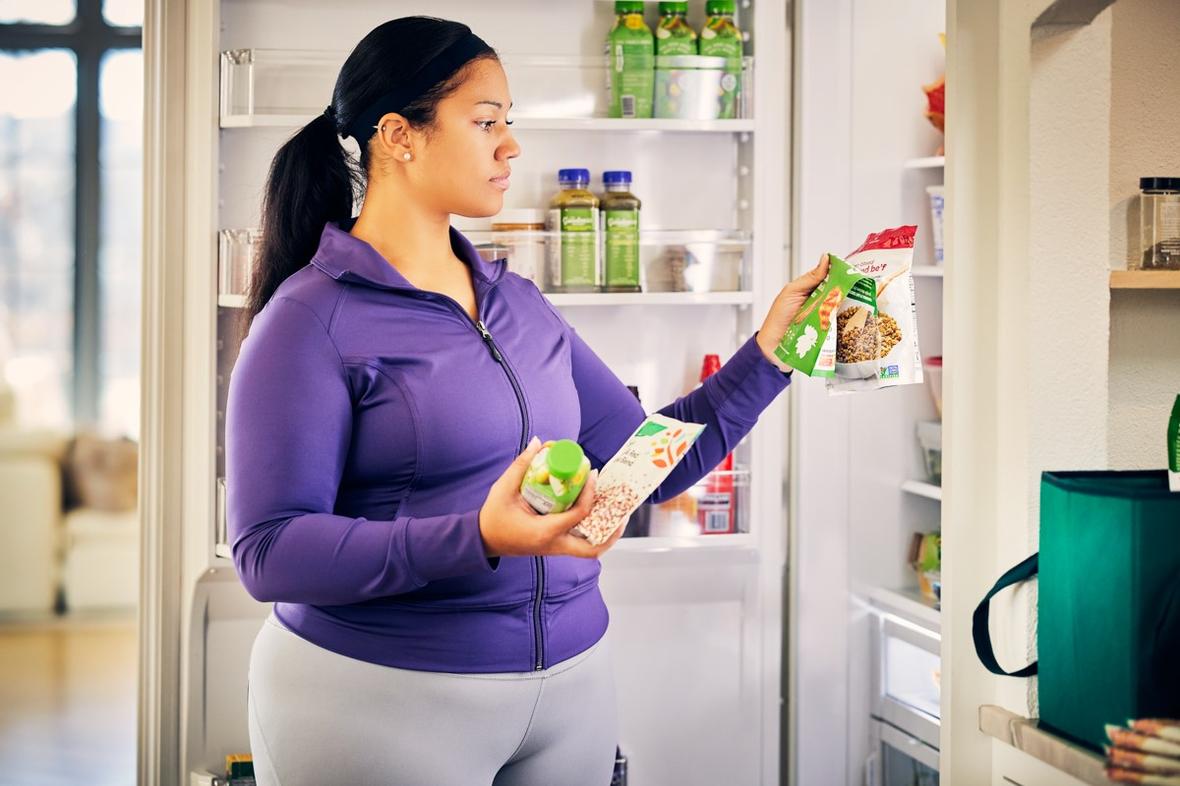Four Drivers Fueling the Functional Snacking Takeover
Nutritional and lifestyle demands accelerate innovation in this burgeoning category
Interesting consumer trends are colliding and waiting to be taken advantage of in the snacking space. Today's shoppers are more knowledgeable about tailored health and wellness solutions, with 59% globally saying they are interested in products customized to meet their nutritional needs 1. Yet nearly 70% of those same consumers are turning to snacks for comfort at least some of the time, and 57% say moments of indulgence for self-care purposes are important 1. This confluence of desires suggests the growing trend of "healthy indulgence" has made its way into snacking and can be powerfully leveraged by giving consumers a product with functional ingredients that still tastes like a treat.
This evolution is leading to more opportunities for innovation, like stretching snacks to fulfill more roles – from supporting active lifestyle goals to acting as meal replacements for younger generations and helping meet the nutritional needs of anti-obesity medication (AOMs) users. Familiar formats and uses still lead the category, but 58% of US consumers are interested in trying snacks that are more nutritious, 43% want snacks that are easier to eat and 33% are looking for unique flavors 2, so there is ample room for branching out. At the same time, consumers are still cost-conscious with their snacking, as 41% are concerned about price 2.
Given these patterns and trends, ADM has identified four drivers fueling the growth in functional snacking. From joyful eating and wellness to weight management, it’s a broad landscape with numerous avenues for snack makers to pursue.
Driver 1: Life Stage and Lifestyle
Different generations are snacking more for the same reason: nutritional supplementation. But those nutritional needs vary greatly depending on life stage. Young adults may demand extra energy for school or job performance. The journey through menopause can require products that help improve bone density or reduce the frequency of hot flashes. Joint health is a considerable concern for healthy aging. And almost everyone, young and old, is looking to increase their protein intake.

In fact, protein was tied (with "low in sugar") for the top attribute sought out in a recent survey, with 34% listing it as very important when deciding which snacks to consume 2. That's a 9-point jump since 2020. It isn't just traditional protein sources being tried, with 73% of global plant-forward consumers (defined as vegetarians, vegans and flexitarians) having had plant-based protein in snacks 3. With many individuals looking to consume 30 grams of protein per meal, functional snacks can help reach their lofty protein intake goals by adding 10 to 20 grams in quick, convenient formats.
From gut health to weight management, active nutrition goals, mood and sleep support, stress management and more, consumers want snacks to be purposeful. They also want snacks in a format that fits into their unique lifestyles, but they're not willing to compromise on flavor or functionality for that convenience. They wish for snacks that are not only easy to consume on-the-go but are also nutritious and satisfying 2.
Trying to formulate for all these factors can be tricky – and the sensory experience must be kept at the forefront. ADM's suite of TasteSpark® flavor modulation solutions helps overcome the most challenging sensory hurdles. They ensure snacks don't compromise on the most important parts – taste and mouthfeel – while keeping the functional ingredients effective and stable.
Driver 2: The GLP-1 Effect
The use of AOMs, including GLP-1 receptor agonists, has permeated throughout all parts of the food industry, and that includes the snacking category. While the average consumer now generally examines product labels, this scrutiny has only intensified with the rise in GLP-1 usage. People want to see snacks with ingredients derived from natural sources and lower sugar and sodium content. They're concerned about excessive sweetness or digestive discomfort while also demanding attributes like high protein and fiber, all in a delightful taste experience.

When it comes to digestive support specifically, we've supplemented our portfolio of HarvestEdge® flours, specialty grains and blends with our new HarvestEdge® Gold Digestive Support Flour Blend. Developed for sweet goods and baked snacks, the blend features Bifidobacterium longum CECT7347 (ES1*) postbiotic and ADM/Matsutani LLC's Fibersol®** prebiotic dietary fiber, so manufacturers will be able to meet demand for products that taste great while also addressing digestive concerns.
For GLP-1 users, taste and nutritional value are equally important (both at 64%) when choosing food and beverage products. Coming in right behind these critical factors is portion control at 60%4, with AOM users increasingly looking for smaller, nutrient dense meals. Snacks inherently provide that portion control, and if they're functional and formulated for flavor, they stand to do quite well amongst this newer consumer cohort.
Driver 3: Mood & Joy, or "Soft Health"
The feeling of joy – delighting in the taste, enjoying the happiness that comes from supporting wellness goals or gaining an overall mood boost simply from the act of having a treat – is critical for the snacking experience. This pursuit of joy through "soft health" attributes can be just as noteworthy as "hard health" attributes like protein and fiber. Pleasing colors and flavors derived from natural sources are significant for these joy-seekers. ADM's Colors from Nature® portfolio and extensive natural flavors library delivers snacks that are as beautiful as they are tasty. On the flip side, ADM's clean-tasting, highly functional plant proteins – such as soy, pea and wheat – are important for developing high-protein sweet or savory snacks with ideal nutritional value to accompany sensory characteristics. Ingredients deemed as "clean label," including seeds and grains, paired with delicious taste and sought-after function can help shift the act of snacking to something inherently positive…and joyful.

While there is more intentionality in shoppers' product purchases today, particularly when targeting wellness goals, many consumers also want easy, low-effort wellness solutions. In fact, 91% of younger generation consumers want something quick and convenient when they need a snack, with 62% willing to put in little to no effort preparing it2. Functional snacks, if formulated or packaged for convenience, can satisfy these needs in familiar formats that also deliver desirable health benefits.
Driver 4: From Girl Dinner to Breakfast Bites and Exploration in Between
The act of piecing together snacks for dinner instead of having a traditional meal, or "girl dinner" as it was first popularized on social media, has become a cultural phenomenon. The convenience, cost savings, portion control, global flavor exploration and nutrition that functional snacks provide are all coalescing to shape a truly new way of eating.
With nearly 30% of consumers reporting an uptick in snacking habits2, there is an opportunity for this mindset to influence other traditional eating occasions beyond dinner, such as breakfast and lunch. The upward trend of high-protein drinkable yogurts is an indication of this. Increases in snacking are especially driven by younger consumers, many of whom snack three times a day or more. In general, the younger cohorts have more snacks but fewer meals. Among total eating occasions, Gen Z, millennials and Gen X all snack more than 50% of the time, while baby boomers snack 45% of the time, still mostly preferring larger, traditional meals2.
Building snacks that capture consumer attention across generations and different lifestyles may come with formulation challenges. Resilient strains, like postbiotics and spore-forming probiotics, solve for tough environments like high heat, which is common with snacks. These microbiome solutions ensure efficacy is retained throughout the formulation and shelf life, paving the way for functional snacking innovation. They also assist with specific wellness objectives – Lactobacillus gasseri CP2305 is an ADM postbiotic that targets stress, mood and sleep5,6,7, while Fibersol® is ideal for adding fiber content and textural support in reduced sugar formulations.
Bringing Next-Gen Functional Snacking to Life
The snack aisle is evolving. What began as simple sustenance has evolved into a sophisticated array of options designed to do more than just curb hunger. While classic snack formats continue to dominate, the excitement lies in an opportunity to "plus them up" with added nutritional value, energy boosts or ingredients to target specific wellness goals. This approach is transforming the way manufacturers and consumers alike are thinking about snacking, demonstrating how snacks play a much bigger and more versatile role in our daily lives.

While the snacking sector presents unique innovation advantages, there are also substantial hurdles to overcome. With a vast library of ingredients, technologies and solutions, ADM can provide quality ingredients and formulation expertise for each step of functional snack development.
Learn more about ADM's solutions and capabilities that can help inform the development of the next snack sensation here.
*ES1 (Bifidobacterium longum CECT7347) is used by ADM Biopolis under license from CSIC.
**Fibersol® is a trademark registered for ADM/Matsutani LLC in the US and other countries.
1FMCG Gurus, Top Ten Trends for 2025
2The Hartman Group, Future of Snacking, 2024
3ADM Outside Voice℠, Global Protein Consumer Discovery Report, 2025
4ADM Outside Voice℠, Anti-Obesity Medications Survey, 2024
5Nishida, K., et al., (2017) Journal of Applied Microbiology 123:1561-1570
6Nishida, K., et al., (2017) Journal of Functional Foods 36:112–121
7Nishida, K., et al., (2019) Nutrients 11:1859